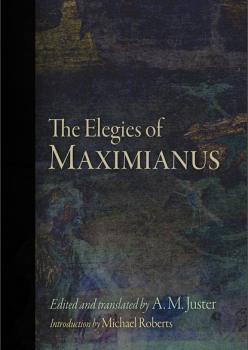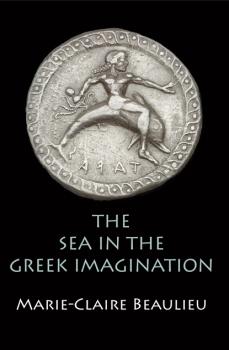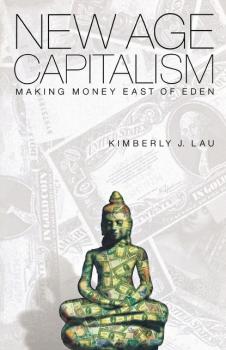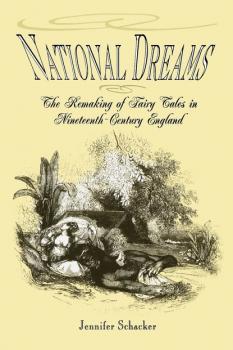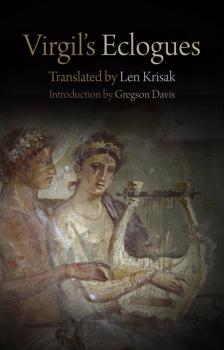Старинная литература: прочее
Различные книги в жанре Старинная литература: прочееThe Elegies of Maximianus
Not much can be known about the life of Maximianus, who has been called «the last of the Roman poets,» beyond what can be inferred from his poetry. He was most likely a native of Tuscany, probably lived until the middle of the sixth century, and, at an advanced age, went as a diplomat to the emperor's court at Constantinople. A. M. Juster has translated the complete elegies of Maximianus faithfully but not literally, resulting in texts that work beautifully as poetry in English. Replicating the feel of the original Latin verse, he alternates iambic hexameter and pentameter in couplets and imitates Maximianus's pronounced internal rhyme, alliteration, and assonance. The first elegy is the longest and establishes the voice of the speaker: a querulous old man, full of the indignities of aging, which he contrasts with the vigor and prestige he enjoyed in his youth. The second elegy similarly focuses on the contrast between past happiness and present misery but, this time, for the specific experience of a long-term relationship. The third through fifth elegies depict episodes from the poet's amatory career at different stages of his life, from inexperienced youth to impotent old man. The last poem concludes with a desire for the release of death and, together with the first, form a coherent frame for the collection. This comprehensive volume includes an introduction by renowned classicist Michael Roberts, a translation of the elegies with the Latin text on facing pages, the first English translation of an additional six poems attributed to Maximianus, an appendix of Latin and Middle English imitative verse that illustrates Maximianus's long reception in the Middle Ages, several related texts, and the first commentary in English on the poems since 1900. The imminence of death and the sadness of growing old that form the principal themes of the elegies signal not only the end of pagan culture and its joy in living but also the turn from a classical to a medieval sensibility in Late Antiquity.
The "Alexandreis" of Walter of Chatilon
Written sometime in the 1170s, Walter of Chatillon's Latin epic on the life of Alexander the Great loomed as large on literary horizons as the works on Jean de Meun, Dante, or Boccaccio. Within a few decades of its composition, the poem had become a standard text of the literary curriculum. Virtually all authors of the thirteenth through fifteenth centuries knew the poem. And an extraordinary two hundred surviving manuscripts, elaborately annotated, attest both to the popularity of the Alexandreis and to the care with which it was read by its medieval audience.
The Sea in the Greek Imagination
The sea is omnipresent in Greek life. Visible from nearly everywhere, the sea represents the life and livelihood of many who dwell on the islands and coastal areas of the Mediterranean, and it has been so since long ago—the sea loomed large in the Homeric epics and throughout Greek mythology. The Greeks of antiquity turned to the sea for food and for transport; for war, commerce, and scientific advancement; and for religious purification and other rites. Yet, the sea was simultaneously the center of Greek life and its limit. For, while the sea was a giver of much, it also embodied danger and uncertainty. It was in turns barren and fertile, and pictured as both a roadway and a terrifying void. The image of the sea in Greek myth is as conflicting as it is common, with sea crossings taking on seemingly incompatible meanings in different circumstances. In The Sea in the Greek Imagination , Marie-Claire Beaulieu unifies the multifarious representations of the sea and sea crossings in Greek myth and imagery by positing the sea as a cosmological boundary between the mortal world, the underworld, and the realms of the immortal. Through six in-depth case studies, she shows how, more than a simple physical boundary, the sea represented the buffer zone between the imaginary and the real, the transitional space between the worlds of the living, the dead, and the gods. From dolphin riders to Dionysus, maidens to mermen, Beaulieu investigates the role of the sea in Greek myth in a broad-ranging and innovative study.
New Age Capitalism
The pursuit of health and wellness has become a fundamental and familiar part of everyday life in America. We are surrounded by an enticing world of products, practices, and promotions assuring health and happiness—cereal boxes claim that their contents can reduce the risk of heart disease, bars of aromatherapy soap seek to wash away our stresses, newspapers celebrate the wonders of the latest superfoods and herbal remedies. No longer confined to the domain of Western medicine, suggestions for healthy living often turn to alternatives originating in distant times and places, in cultures very different from our own. Diets from ancient or remote groups are presented as cures for everything from colds to cancer; exercise regimens based on Eastern philosophies are heralded as paths to physical health and spiritual wellbeing. In New Age Capitalism , Kimberly Lau examines the ideological work that has created this billion-dollar business and allowed «Eastern» and other non-Western traditions to be coopted by Western capitalism. Extending the orientalist logic to the business of health and wellness, American companies have created a lucrative and competitive market for their products, encouraging consumers to believe that they are making the right choices for personal as well as planetary health. In reality, alternative health practices have been commodified for an American public longing not only for health and wellness but also for authenticity, tradition, and a connection to the cultures of an imagined Edenic past. Although consumers might prefer to buy into «authentic» non-Western therapies, New Age Capitalism argues that the market economy makes this goal unattainable.
Foundation Myths in Ancient Societies
Throughout the ancient world, origin stories were told across the ancient world in many different ways: through poetry, prose, monumental and decorative arts, and performance in civic and religious rituals. Foundation myths, particularly those about the beginnings of cities and societies, played an important role in the dynamics of identity construction and in the negotiation of diplomatic relationships between communities. Yet many ancient communities had not one but several foundation myths, offering alternative visions and interpretations of their collective origins. Seeking to explain this plurality, Foundation Myths in Ancient Societies explores origin stories from a range of classical and ancient societies, covering both a broad chronological span (from Greek colonies to the high Roman empire) and a wide geographical area (from the central Mediterranean to central Asia). Contributors explore the reasons several different, sometimes contradictory myths might coexist or even coevolve. Collectively, the chapters suggest that the ambiguity and dissonance of multiple foundation myths can sometimes be more meaningful than a single coherent origin narrative. Foundation Myths in Ancient Societies argues for a both/and approach to foundation myths, laying a framework for understanding them in dialogue with each other and within a wider mythic context, as part of a wider discourse of origins. Contributors : Lieve Donnellan, Alfred Hirt, Naoíse Mac Sweeney, Rachel Mairs, Irad Malkin, Daniel Ogden, Robin Osborne, Michael Squire, Susanne Turner.
National Dreams
Fairy tales and folktales have long been mainstays of children's literature, celebrated as imaginatively liberating, psychologically therapeutic, and mirrors of foreign culture. Focusing on the fairy tale in nineteenth-century England, where many collections found their largest readership, National Dreams examines influential but critically neglected early experiments in the presentation of international tale traditions to English readers. Jennifer Schacker looks at such wondrous story collections as Grimms' fairy tales and The Arabian Nights in order to trace the larger stories of cross-cultural encounter in which these books were originally embedded. Examining aspects of publishing history alongside her critical readings of tale collections' introductions, annotations, story texts, and illustrations, Schacker's National Dreams reveals the surprising ways fairy tales shaped and were shaped by their readers. Schacker shows how the folklore of foreign lands became popular reading material for a broad English audience, historicizing assumed connections between traditional narrative and children's reading. The tales imported and presented by such British writers as Edgar Taylor, T. Crofton Croker, Edward Lane, and George Webbe Dasent were intended to stimulate readers' imaginations in more ways than one. Fairy-tale collections provided flights of fancy but also opportunities for reflection on the modern self, on the transformation of popular culture, and on the nature of «Englishness.» Schacker demonstrates that such critical reflections were not incidental to the popularity of foreign tales but central to their magical hold on the English imagination. Offering a theoretically sophisticated perspective on the origins of current assumptions about the significance of fairy tales, National Dreams provides a rare look at the nature and emergence of one of the most powerful and enduring genres in English literature.
Fairy Tales and Society
This collection of exemplary essays by internationally recognized scholars examines the fairy tale from historical, folkloristic, literary, and psychoanalytical points of view. For generations of children and adults, fairy tales have encapsulated social values, often through the use of fixed characters and situations, to a far greater extent than any other oral or literary form. In many societies, fairy tales function as a paradigm both for understanding society and for developing individual behavior and personality. A few of the topics covered in this volume: oral narration in contemporary society; madness and cure in the 1001 Nights ; the female voice in folklore and fairy tale; change in narrative form; tests, tasks, and trials in the Grimms' fairy tales; and folklorists as agents of nationalism. The subject of methodology is discussed by Torborg Lundell, Stven Swann Jones, Hans-Jorg Uther, and Anna Tavis.
Virgil's Eclogues
Publius Vergilius Maro (70-19 B.C.), known in English as Virgil, was perhaps the single greatest poet of the Roman empire—a friend to the emperor Augustus and the beneficiary of wealthy and powerful patrons. Most famous for his epic of the founding of Rome, the Aeneid , he wrote two other collections of poems: the Georgics and the Bucolics , or Eclogues . The Eclogues were Virgil's first published poems. Ancient sources say that he spent three years composing and revising them at about the age of thirty. Though these poems begin a sequence that continues with the Georgics and culminates in the Aeneid , they are no less elegant in style or less profound in insight than the later, more extensive works. These intricate and highly polished variations on the idea of the pastoral poem, as practiced by earlier Greek poets, mix political, social, historical, artistic, and moral commentary in musical Latin that exerted a profound influence on subsequent Western poetry. Poet Len Krisak's vibrant metric translation captures the music of Virgil's richly textured verse by employing rhyme and other sonic devices. The result is English poetry rather than translated prose. Presenting the English on facing pages with the original Latin, Virgil's Eclogues also features an introduction by scholar Gregson Davis that situates the poems in the time in which they were created.
Women's Folklore, Women's Culture
The essays in Women's Folklore, Women's Culture focus on women performers of folklore and on women's genre of folklore. Long ignored, women's folklore is often collaborative and frequently is enacted in the privacy of the domestic sphere. This book provides insights balancing traditional folklore scholarship. All of the authors also explore the relationship between make and female views and worlds. The book begins with the private world of women, performances within the intimacy of family and fields; it then studies women's folklore in the public arena; finally, the book looks at the interrelationships between public and private arenas and between male and female activities. By turning our attention to previously ignored women's realms, these essays provide a new perspective from which to view human culture as a whole and make Women's Folklore, Women's Culture a significant addition to folklore scholarship
Poems of the Elder Edda
The great poetic tradition of pre-Christian Scandinavia is known to us almost exclusively though the Poetic Edda . The poems originated in Iceland, Norway, and Greenland between the ninth and thirteenth centuries, when they were compiled in a unique manuscript known as the Codex Regius . The poems are primarily lyrical rather than narrative. Terry's readable translation includes the magnificent cosmological poem Völuspá («The Sibyl's Prophecy»), didactic poems concerned with mythology and the everyday conduct of life, and heroic poems, of which an important group is concerned with the story of Sigurd and Brynhild. Poems of the Elder Edda will appeal to students of Old Norse, Icelandic, and Medieval literature, as well as to general readers of poetry.
